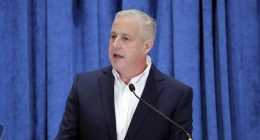IF YOU think that charging up your iPhone uses up lots of electricity, you could be wrong.
Many of us are trying to cut back on energy use at the moment as it is more expensive – but your iPhone isn’t pushing up your bills.
How much does it cost to charge my iPhone?
In fact, recharging it once a day will cost less than £5 over the course of the year on average, according to research by Uswitch.
An iPhone 12 Pro Max will cost £3.14 per year to keep charged – that’s less than 1p per day and just 26p per month.
The phone uses a 20 watt charger and takes two hours and 27 minutes to get a full battery.
Uswitch used a rate of 17.2p per kilowatt hour to calculate the amount.
Should I leave my iPhone charging overnight?
Some people are wary about leaving their iPhone charging overnight due to fire risk concerns.
But if you follow safety steps, such as using the proper charger and never sleeping with it under your pillow, it should be safe.
What you will risk, however, is ruining your phone’s battery.
That means it will require more frequent top-ups and might need to be replaced sooner – adding extra expense.
How else can I save money on my energy bills?
Wholesale gas prices have surged since the beginning of the year, creating a strain on the UK energy industry that has toppled certain providers.
British households are having to pay more as the energy price cap has risen to £1,277 and many people are looking for ways to reduce how much they spend.
As charging your iPhone doesn’t use up much electricity, there are better ways ways to drive down costs and save money on your energy bills.
For example, large kitchen appliances such as dishwashers and washing machines cost more to run – but there are ways to make them cheaper.
If you’re on a low income or receiving benefits, you could be eligible for the warm home discount, which gets you £140 off your bills during the winter months.
The cold weather payment is a £25 grant for people on certain benefits when the temperature drops below zero for seven days.
Buying a cheap draught excluder can help trap warm air in your home, reducing the need to put the heating on.
Using energy efficient appliances can shave money off your annual bill, and making sure your home is well insulated will help retain heat.
We pay for your stories!
Do you have a story for The Sun Online Money team?
Email us at [email protected]
This post first appeared on thesun.co.uk










